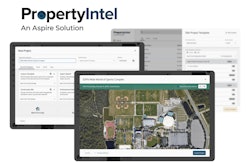
 Make sure to set a realistic timeline for implementing business software.Boss Software
Make sure to set a realistic timeline for implementing business software.Boss Software
The decision to switch or purchase business software is a significant one for landscape contractors and snow removal professionals. The process, which takes time and strategy and can be stressful, includes advanced research to determine the best vendor, walking through demos, reviewing the software and negotiating the final agreement.
All of this adds extra pressure to owners, managers and employees up and down the company ladder to ensure the software delivers the return on investment that is expected.
The real pressure comes after the agreement is signed and the onboarding process begins. User onboarding is a massive responsibility for the person(s) assigned to lead the charge. According to research from customer strategy advisory firm ThinkJar, nearly 70 percent of customer churn could be prevented if issues were resolved during the software onboarding process.
Client support during the onboarding process is critical.
Nearly two-thirds of customers say that onboarding, which refers to the level of support they’re likely to receive after the sale, is an important consideration in whether they make the purchase in the first place.
Mistakes to avoid when onboarding new software
Once the agreement is signed, and it’s time to onboard the software, there are several things to keep in mind.
1. The No. 1 mistake to avoid is to think that the software is a cure all for mismanagement. This is by far the leading mistake owners make when onboarding new software. New software will help streamline processes and efficiencies, but it can’t cover up poor planning or decision-making.
2. The second common mistake is to think that the software must be perfectly implemented on day one. An enterprise software should be thought of as adaptable and capable of growing with a company’s needs. Reports should show the following:
a. Are direct costs too high or too low?
b. Are production factors too fast or too slow?
c. Are margins too high or too low? These key performance indicators need to be reviewed, fine-tuned and corrected to make sure proposals are competitive.
3. A third mistake companies make is not having the correct people in place to guide the deployment. Either the people managing the deployment are overworked and don’t have the time, or they are not familiar enough with the company to answer key questions about the direction of the deployment. The onboarding process needs someone to manage it. It’s not a full-time job, but it is a task that takes attention. As the company grows, so does that person’s responsibilities with the system.
4. The final mistake to avoid during the onboarding process is not setting a realistic timeframe for implementation or setting any hard goals for the team. Failure to do this results in going too fast and making mistakes or not setting priorities or benchmarks for deployment because everything else takes priority.
Many of the onboarding mistakes contractors make are a result of one or a combination of these. A successful onboarding process requires setting clear goals and expectations and providing both the proper people resources and time to do it right.



















